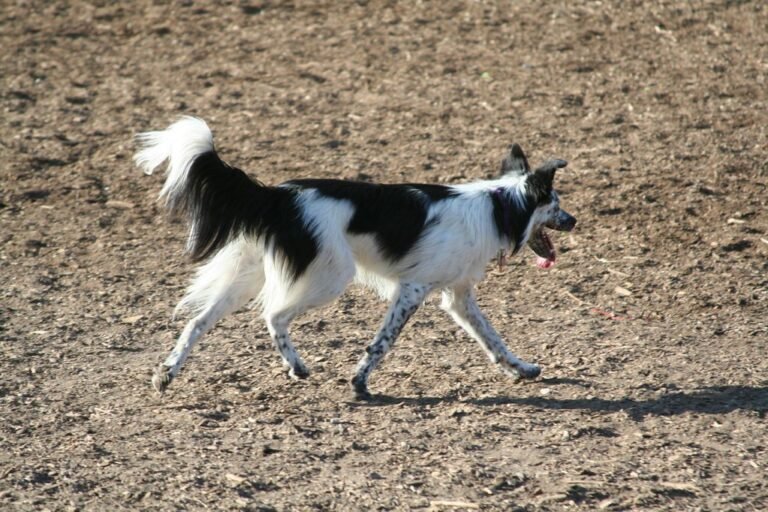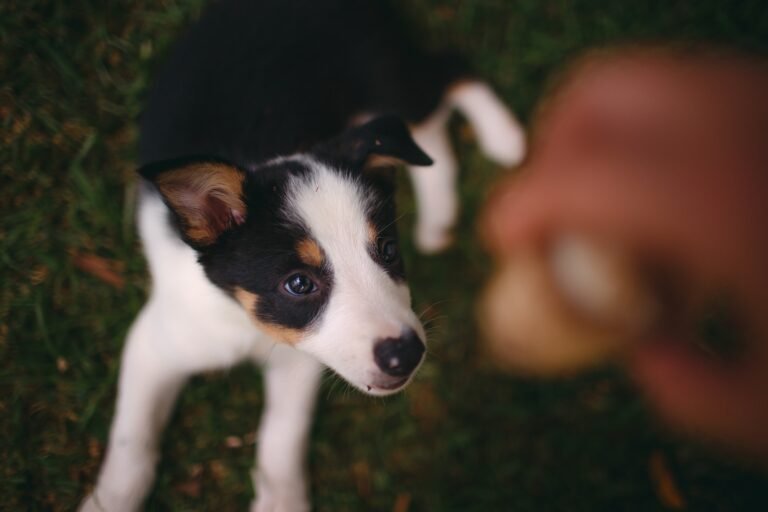Crate Training A Border Collie: 9 Fast And Easy Steps To Success
Crate Training A Border Collie: 9 Fast And Easy Steps To Success
Crate training a Border Collie is a vital process for any Border Collie owner. With their high energy and tendency to get into mischief when bored, teaching your Border Collie to enjoy spending time in their crate is essential for your peace of mind. But where do you start with crate training this energetic breed?
Follow this step-by-step guide to crate train your Border Collie effectively and make it a safe space they actually enjoy. With positive reinforcement and patience, you’ll have a perfectly crate-trained Border Collie.
Crate training a Border Collie Step 1: Select the Right Crate
Choosing an appropriately sized crate is crucial. For an adult Border Collie, a crate around 42 inches long by 28 inches wide by 30 inches tall is ideal. Make sure to get a wire crate with a divider panel so you can resize it as your puppy grows.
The crate should allow your dog to stand up, turn around, and lie down comfortably – but not have excessive extra room for bathroom accidents. Place a comfy crate mat and chew toys inside for entertainment. Check out these recommendations from amazon.
Crate training a Border Collie Step 2: Make the Crate Appealing
Before training even starts, you want your Border Collie to see their new crate as an appealing retreat. Place the crate in a high-traffic family area so your puppy can observe and investigate it freely.
Sprinkle treats around and inside the crate to motivate your pup to enter. Drape a blanket over the top to create a den-like atmosphere. For many Border Collies, crates feel like a familiar “den” space they instinctively enjoy. Keep the door open so they don’t feel trapped.
Crate training a Border Collie Step 3: Practice While You’re Home
Have your Border Collie get comfortable spending short stints inside their crate during the day when you’re home. Use a command like “crate” to direct them inside, rewarding them with treats once they step in.
If your pup comes back out right away, lure them calmly back into the crate and reward again with treats and praise. Gradually increase the duration of crate time to 20-30 minute sessions with you present to supervise. This prevents negative associations.
Crate training a Border Collie Step 4: Feed Meals Inside the Crate
Feeding your Border Collie their regular kibble meals inside the crate helps reinforce it as a pleasurable spot. You can also moisten the kibble with a bit of broth or warm water to make it extra enticing.
Eating all their meals in the crate teaches your pup that great things happen there. This step really speeds up positive crate training. Maintain their normal feeding schedule, just deliver meals in their crate.
Crate training a Border Collie Step 5: Introduce Crate Closing
Once your Border Collie is happily entering their crate and relaxing inside for up to 30 minutes with you around, start briefly closing the door while they eat. Continue to reward calm behavior in the closed crate with treats slipped through the wires.
Start with just 10 seconds at first, using your release command as you reopen the door. Slowly work up to leaving the door closed for a few minutes while puppy finishes eating, as long as they stay relaxed. Keep sessions brief to prevent whining or barking.
Crate training a Border Collie Step 6: Add Special Chew Toys
Introduce a few special long-lasting chew toys your Border Collie only receives when inside their crate. Sterilized bones, Kongs stuffed with peanut butter or treats, and puzzle toys work well. Rotate the “crate toys” to keep things interesting.
Having special high-value crate toys gives your pup something constructive to do while inside, decreasing destructive or anxious behavior. Only allowing access to these great toys while in their crate motivates them to spend time inside.
Crate training a Border Collie Step 7: Crate for Short Durations While Home
After your Border Collie is eating happily in their crate with the door closed, start direct crating for short periods, like when you shower or do household chores. Continue to provide a stuffed chew toy and praise calm behavior.
Use your cue word to direct pup inside. Reward with a treat once they enter. Close the door and go about your tasks for 5-15 minutes at first. Slowly increase the crating duration up to 1-2 hours, as long as your pup stays relaxed. Keep sessions positive by releasing before barking starts.
Crate training a Border Collie Step 8: Leave Your Pup Home in the Crate
Once your Border Collie can spend an hour or two calmly in their crate with you home, they are ready to be crated when left alone. Start with very brief solo crating sessions of 15-30 minutes and gradually work up to the maximum time they can hold their bladder (usually 1 hour per month old).
Come home before they become distressed. Keep greetings low key – take them straight outside to relieve themselves before playtime. This prevents accidents and over-excitement about your return.
Crate training a Border Collie Step 9: Troubleshoot Any Issues
If your Border Collie cries excessively, digs, chews or shows signs of stress in their crate, go back a few training steps. Make sure you aren’t leaving them alone crated for too long.
Use calming aids like adaptil spray on bedding or a pheromone diffuser. Provide frozen stuffed Kongs to occupy them. Ensure their needs are met before crating. With patience, they will grow to see their crate as a relaxing den.
Frequently Asked Questions About Crate Training a Border Collie
Crate training a high-energy breed like the Border Collie does take some finesse. Here are answers to some common questions about helping your Border Collie learn to love their crate:
How long can a Border Collie stay in a crate?
Border Collies shouldn’t be crated longer than 4-6 hours maximum, as they are prone to boredom and separation stress. Adult dogs able to “hold it” for longer still need mental stimulation. Hire a dog walker if away longer than 4-6 hours. Crates are not meant for all-day confinement.
Is it cruel to crate a Border Collie?
When done correctly using positive reinforcement, crate training is not cruel for Border Collies. In fact, most dogs see their crate as a safe den-like space. Just be sure to meet their needs before crating, use reward-based training, and prevent distress by not exceeding their time limit alone.
Should I crate my Border Collie at night?
Many owners do crate Border Collies at night, which teaches them to settle and prevents nighttime wanderings. Place the crate in your bedroom and ensure your pup fully empties their bladder before bedtime. Some pups adjust to sleeping outside the crate as adults, while others prefer their cozy crate all their life.
How do I get my Border Collie to stop whining in the crate?
Excessive whining usually indicates that crate training has progressed too quickly. Go back to basics with very short sessions, high-value chews, rewarding calmness, and meeting their needs before crating. Ensure your pup isn’t suffering separation anxiety. Never reward whining by releasing them – wait until quiet to let out.
Do Border Collies like crates?
Yes, most Border Collies can learn to actively enjoy spending time in their crate when it is introduced using reward-based training. Their crate mimics a den which appeals to their natural instincts. With patience and consistency, even high-energy Border Collies become relaxed and content in their cozy crate.
Conclusion
Crate training requires time and consistency, but pays off tremendously with a well-behaved Border Collie. Research shows that dogs see their crate as a safe space when training is done using positive reinforcement.
By following the outlined steps, being patient, and ensuring your Border Collie’s needs are met, you can expect your pup to eventually love resting in their crate. Just be sure not to rush the process or exceed reasonable crating durations. Proper crate training creates a well-adjusted dog and happy owner!









